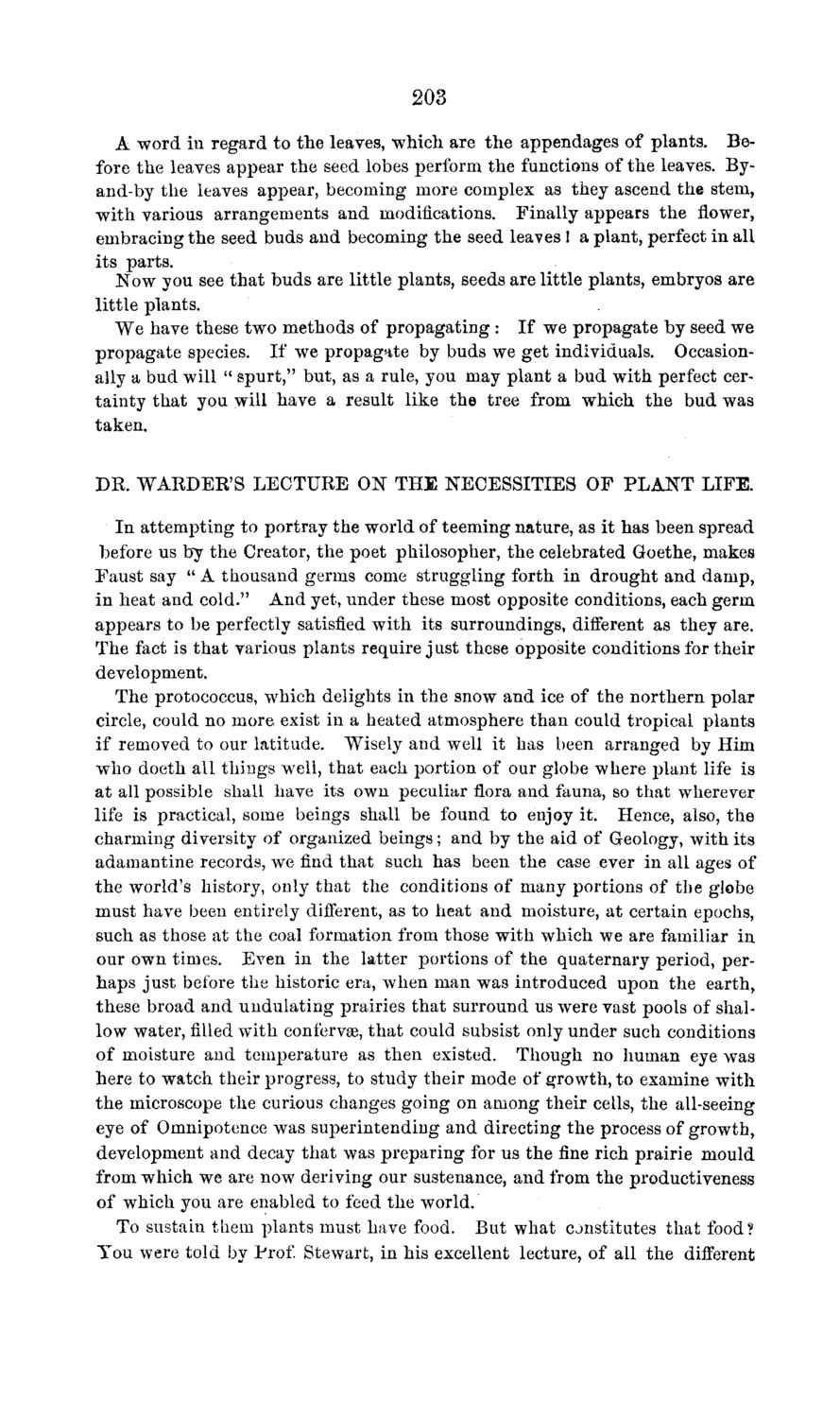| |
| |
Caption: Board of Trustees Minutes - 1869
This is a reduced-resolution page image for fast online browsing.

EXTRACTED TEXT FROM PAGE:
203 A word in regard to the leaves, which are the appendages of plants. Before the leaves appear the seed lobes perform the functions of the leaves. Byand-by the leaves appear, becoming more complex as they ascend the stem, with various arrangements and modifications. Finally appears the flower, embracing the seed buds and becoming the seed leaves ! a plant, perfect in all its parts. Now you see that buds are little plants, seeds are little plants, embryos are little plants. We have these two methods of propagating : If we propagate by seed we propagate species. If we propagate by buds we get individuals. Occasionally a bud will " spurt," but, as a rule, you may plant a bud with perfect certainty that you will have a result like the tree from which the bud was taken. DR. W A R D E R ' S L E C T U R E ON T H E NECESSITIES O F P L A N T L I F E . In attempting to portray the world of teeming nature, as it has been spread before us by the Creator, the poet philosopher, the celebrated Goethe, makes Faust say " A thousand germs come struggling forth in drought and damp, in heat and cold." And yet, under these most opposite conditions, each germ appears to be perfectly satisfied with its surroundings, different as they are. The fact is that various plants require j List these opposite conditions for their development. The protococcus, which delights in the snow and ice of the northern polar circle, could no more exist in a heated atmosphere than could tropical plants if removed to our latitude. Wisely and well it has been arranged by Him who doeth all things well, that each portion of our globe where plant life is at all possible shall have its own peculiar flora and fauna, so that wherever life is practical, some beings shall be found to enjoy it. Hence, also, the charming diversity of organized beings; and by the aid of Geology, with its adamantine records, we find that such has been the case ever in all ages of the world's history, only that the conditions of many portions of the globe must have been entirely different, as to heat and moisture, at certain epochs, such as those at the coal formation from those with which we are familiar in our own times. Even in the latter portions of the quaternary period, perhaps just before the historic era, when man was introduced upon the earth, these broad and undulating prairies that surround us were vast pools of shallow water, filled with confervae, that could subsist only under such conditions of moisture and temperature as then existed. Though no human eye was here to watch their progress, to study their mode of growth, to examine with the microscope the curious changes going on among their ceils, the all-seeing eye of Omnipotence was superintending and directing the process of growth, development and decay t h a t was preparing for us the fine rich prairie mould from which we are now deriving our sustenance, and from the productiveness of which you are enabled to feed the world. To sustain them plants must have food. But what constitutes that food? You were told by Frof. Stewart, in his excellent lecture, of all the different
| |